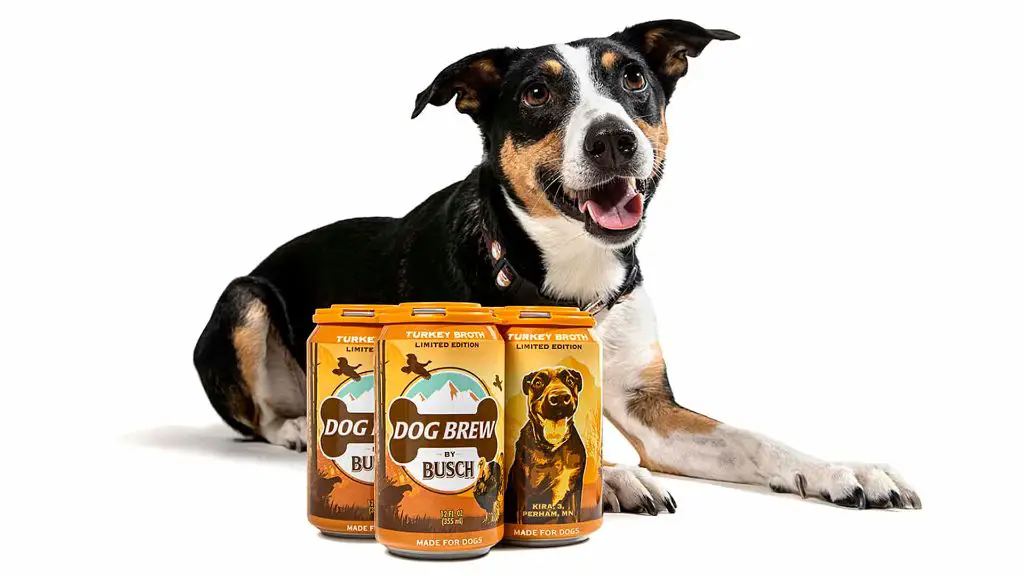Introduction
For many dog owners, deciding between wet or dry food can be a difficult choice. Both wet and dry dog food come with their own set of pros and cons regarding nutrition, health benefits, convenience, and cost. With so many options on the market, owners want to make the best decision for their canine companions.
Wet dog food generally contains more moisture and tends to be more palatable and aromatic. It often contains more animal protein as the primary ingredient. Wet foods must be refrigerated after opening and have a shorter shelf life. Dry kibble contains less moisture but can promote dental health. It’s more affordable per serving and very convenient to store and feed. Dry food also contains more carbohydrates.
When choosing between wet or dry food, there are several factors for owners to consider. We’ll explore the key differences between these two types of dog food including nutrition, health impacts, taste, convenience, and cost. Understanding the pros and cons will help owners make the optimal choice for their dog’s needs.
Nutritional Differences
There are several key nutritional differences between wet and dry dog food that owners should consider when choosing between the two:
Water Content
Wet dog food contains much higher moisture levels, usually around 75% water, compared to only 10% in dry kibble. This extra water content helps keep dogs hydrated.

Protein
Wet foods tend to have higher protein content, with some premium canned foods containing up to 11% protein. Dry kibble averages around 25% protein but once you factor in its low moisture content, the actual amount of protein is less.
Fat
The fat content in wet food is only around 5-7%, lower than the 10-15% often found in dry kibble. However, for overweight dogs, the lower fat in wet food can be beneficial.
Carbohydrates
Wet foods typically have much lower carbohydrate content since they do not require starch binders like some dry kibbles. This makes wet food closer to a dog’s natural carnivorous diet.
Dental Health
Wet food is generally better for dogs’ dental health than dry kibble. The act of chewing dry kibble can help scrape off some plaque and tartar from a dog’s teeth, but it does not provide the full dental benefits that raw bones and other dental chews do. On the other hand, some ingredients in dry dog food may contribute to tartar buildup over time.
Many dry kibbles contain simple carbohydrates that can get stuck on the surface of teeth. As bacteria in the mouth digest these carbohydrates, they produce acids that can demineralize tooth enamel, leading to cavities. Wet foods typically contain fewer of these simple carbohydrates. The higher moisture content also helps reduce plaque buildup.
Owners should brush their dogs’ teeth regularly, even when feeding wet food, to maximize dental health. Annual veterinary dental cleanings are also recommended. But in general, wet food does not promote tartar buildup and tooth decay the way that some dry kibbles do, making it a better option for dental health.
Digestion
Wet and dry dog foods go through very different digestive processes once consumed. Dry kibble requires a lot more chewing and saliva to break down the food before swallowing. This extra chewing and salivation can be beneficial for some dogs’ dental health. However, for dogs with dental issues or seniors with weaker jaws, this can be difficult and painful.
Wet foods contain much higher moisture content, so they are softened and partially broken down before entering the stomach. This requires less mechanical digestion with the teeth and makes it easier on the stomach as well. The high moisture content also helps keep dogs hydrated and promotes healthy digestion.
Some studies have shown that the digestion process of wet food can be easier on the dog’s gastrointestinal system. The moisture and soft texture places less strain on the stomach and intestines. This could be beneficial for dogs prone to gastrointestinal issues like inflammatory bowel disease.
The moisture in wet foods can also help with constipation, creating bulkier, softer stool. Dry kibble can sometimes lead to dehydration and harder stools that are more difficult to pass. Adding water to kibble can help with this.
Overall, wet dog food is gentler on the digestive tract compared to dry kibble. For dogs with dental issues, gastrointestinal problems, or those needing extra hydration, a wet food diet may be easier on their system.
Hydration
One of the biggest differences between wet and dry dog food is the water content. Wet foods typically contain around 75% moisture, whereas dry foods only have about 10% moisture. This higher water content makes wet food better for hydrating your dog.
Dogs have a low thirst drive compared to other animals, meaning they often don’t drink enough water on their own. Getting most of their water from dry kibble can lead to chronic mild dehydration. This puts extra strain on the kidneys and increases the risk of urinary tract infections.
The high moisture content in wet foods helps dogs stay optimally hydrated. It also creates a broth or gravy that encourages dogs to consume even more water as they lap up the liquid in the food. Keeping your dog well hydrated with wet food supports kidney function and reduces the chances of urinary crystals or stones.
Palatability

When it comes to taste preferences, dogs tend to greatly enjoy the flavor of wet dog food. The chunks of meat and broth provide strong aromas and flavors that are naturally appealing to a dog’s senses. This is in contrast to dry kibble, which has less aroma and typically less intense flavoring. For picky eaters or dogs that are bored with their current diet, a switch to wet food may be met with great enthusiasm at meal times. The palatability and taste of wet food makes it more likely that dogs will readily consume their entire portion.
That said, some dogs do perfectly fine on dry kibble and seem to enjoy the crunchy texture. So palatability comes down to the individual dog. But many owners report their dogs seem more satisfied and excited to eat after transitioning from dry to wet food. The moist texture and savory flavors create an eating experience closer to what dogs would naturally eat in the wild. So for dogs that need encouragement to eat or have a lackluster appetite, wet food can provide positive reinforcement.
Storage and Convenience
When it comes to shelf life, dry dog food often has an advantage over wet food. Kibble can be stored easily in a sealed container or bag and will typically last for several weeks after opening before going stale. The lower moisture content allows it to remain fresh longer. Canned or pouched wet foods, on the other hand, must be refrigerated after opening and have a fridge life of just a few days.
Dry food wins for convenience as well. Kibble can be left out in a bowl for mealtimes without perishing. Owners can also easily take it on trips or outings by packing some in a bag or container. Canned or pouched wet foods require a can opener or scissors to access each meal. Their increased moisture also makes them more difficult to portion out and feed without making a mess. For busy owners or those who like simplicity, dry kibble offers a more grab-and-go way to feed dogs.
Cost
There are some notable differences in cost between wet and dry dog food. Dry kibble tends to be less expensive per pound compared to canned or pouch wet foods. This is because dry foods have lower water content, allowing more actual food to be packed into each pound. On average, a high quality dry dog food costs around $1-$3 per pound, while a high quality wet food costs $3-$5 or more per pound.
However, this doesn’t tell the whole story. Canned and pouch foods contain around 75% water, while kibbles contain only around 10% water. This means when you compare foods on a dry matter basis (without water), wet foods may actually be more affordable than they first appear. You also have to feed less canned food by volume to deliver the same nutritional value. So the cost difference diminishes when you calculate cost per feeding.
There are ways to reduce the cost of feeding wet food as well. Buying larger cans or cases of food can bring down the per ounce price. Rotating between wet and dry food can allow you to take advantage of kibble’s lower cost while still providing the benefits of wet food. Homemade food is another lower cost option, though it requires more effort. Overall, while wet dog food costs more upfront, adjusting portion sizes and shopping strategically can help make it a very feasible option.
Health Concerns
Both wet and dry dog food come with some potential health concerns to be aware of.
For wet dog food, the high moisture content means it can spoil quickly if left out. This creates a risk of bacterial growth like salmonella or listeria, which can cause gastrointestinal upset in dogs. Canned wet food also tends to be packaged in cans lined with BPA plastic, which some studies have linked to endocrine disruption. However, many brands now offer BPA-free cans.
With dry kibble, some of the ingredients used to help form and bind the food can be problematic. For example, corn and wheat are common allergens for dogs. Too many carbohydrates from grains could also lead to obesity. Dry dog food recipes also tend to be higher in preservatives to maintain freshness. While approved by regulators, there are concerns about the long-term effects of some synthetic preservatives.
To minimize risks with either type, stick to high-quality commercial brands following pet food standards. Look for BPA-free wet foods and grain-free or limited ingredient dry foods. Rotate proteins and brands, follow feeding guidelines, and refrigerate opened cans. Consult your veterinarian if you have any concerns about ingredients or possible food allergies.
Conclusion
After reviewing the key differences between wet and dry dog food, there are good reasons to consider both options. Wet dog food contains more moisture and is generally seen as more tasty for dogs. The higher moisture content also aids hydration and can help improve dental health. However, dry kibble can work better for some dogs and is often more affordable and convenient to store. Dry food also helps clean teeth through the mechanical action of chewing. The ideal diet for many dogs is likely a combination of wet and dry food. It’s best to consult your veterinarian and consider your dog’s unique needs, preferences, and health to determine if wet food, dry food, or a mix is optimal. The key is choosing a high-quality product tailored for your dog’s life stage and activity level.

